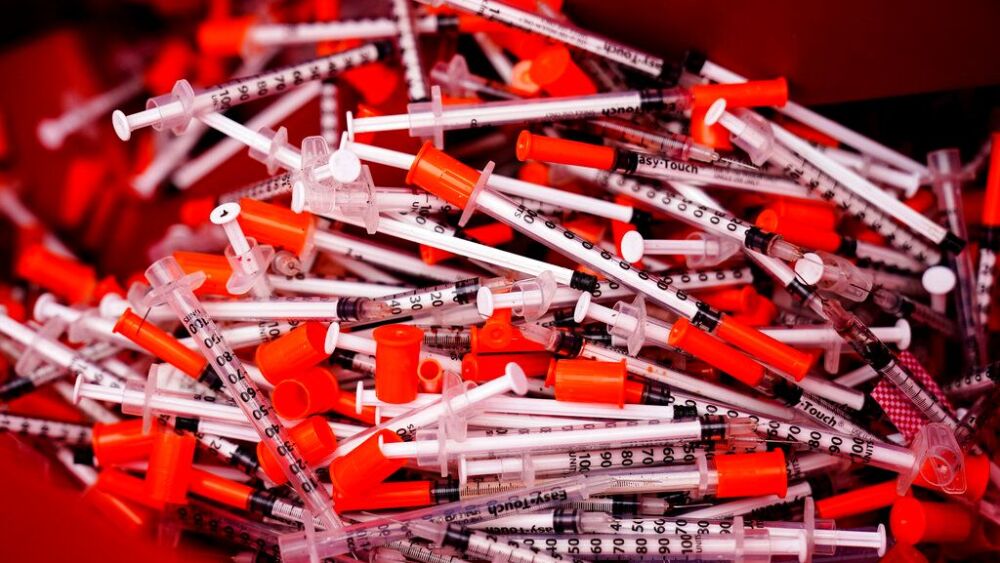By Destiny Torres
The Orange County Register
SANTA ANA, Calif. — The Harm Reduction Institute is once again trying to get approval from the state to provide needle exchange services in Santa Ana, but local leaders still firmly against the program say it would threaten the health, safety and quality of life of residents.
Between 2016 and 2018, the Orange County Needle Exchange Program operated in Santa Ana before shutting down after city officials denied it a permit, saying the program had resulted in needles littering the area. The same group was barred by a judge in November 2018 from running a mobile needle exchange program in four Orange County cities, including Santa Ana, saying volunteers didn’t have adequate resources to prevent or clean up needle litter.
The Harm Reduction Institute came in with a retooled proposal, briefly getting state support last summer. But the California Department of Public Health in August rescinded its authorization for the Harm Reduction Institute to provide syringe exchange services in Santa Ana after much pushback from city officials.
In December, the Harm Reduction Institute filed a new application to the state’s public health department, trying again to get a service up and running. Carol Newark, executive director of the Harm Reduction Institute, said the nuts and bolts of the programming are the same as their first application.
The nonprofit wants to provide mobile delivery of clean syringes and pickup of used syringes at private homes, tents, RVs and other non-traditional forms of housing. Deliveries would be available two days out of the week, with the remaining three dedicated to pickup services.
City spokesperson Paul Eakins said staffers are putting together information and concerns from residents to soon share with the state’s public health department.
In its application to state officials, the Harm Reduction Institute said it expects it would hand out at least 300,000 needles to 500 people annually, and would anticipate collecting about 180,000 of those needles, according to the nonprofit’s application.
Mayor Valerie Amezcua said she and other local leaders are concerned the remaining 120,000 needles could end up in public parks or other community spaces.
“This is about the quality of life for our constituents. We do not want to find syringes in our parks and our schools and our streets,” Amezcua said. “God forbid, a child or family or anybody gets poked by one, and for the rest of their life, they have to suffer.”
Newark said the 60% estimate of syringes being collected by HRI takes into account other avenues that folks have to get rid used needles. Participants, she said, can dispose of syringes at sharps disposal kiosks in the community or exchange them at other syringe service programs. Syringes are also often confiscated and disposed of by the police, she added.
“We’re unable to demand that people only bring them back to our program for disposal,” Newark said. “Those figures aren’t to suggest that people are going to just litter 120,000 syringes.”
Amezcua argued the city already plays a big role in addressing homeless and substance abuse concerns, not only for Santa Ana, but for neighboring cities as well.
“In Santa Ana, we have two shelters. We have the homeless issues that we’re addressing. We have gang issues that we’re dealing with. We’re addressing housing issues,” Amezcua said. “How many fires can we put out?”
Newark said the city was chosen because it has the largest number of HIV cases in the county. The most recent data from the OC Health Care Agency from 2022 reported 46 cases in Santa Ana.
“We’re trying to prevent the spread of HIV. That’s our No. 1 mission. We have to go where the highest cases are. And the facts are that is Santa Ana,” Newark said. “Any transmission of HIV is a public health failure. If we’re preventing one new case of HIV, that is still a worthwhile endeavor.”
Amezcua said the city already offers services and programs to help people with their needs whether it be for HIV, homelessness or drug addiction of any kind. The city does not need a needle exchange program, she said.
The Harm Reduction Institute currently offers other overdose prevention and harm reduction services to about 300 people via street outreach yearly, as well as case management and treatment navigation services for participants who need medical care or social and mental health services.
The movement against the syringe program is growing, Amezcua said. On Saturday, the mayor’s usual monthly meeting with neighborhood association leaders focused in on the Harm Reduction Institute’s application. In attendance were also councilmembers David Penaloza and Phil Bacerra, Assemblymember Avelino Valencia and Congressman Lou Correa, as well as several Santa Ana residents who shared the city’s concerns, Amezcua said.
“Hopefully we can do some things that the community asked for. We’re going to do a petition that people will be able to sign, pass around, get to their neighbors to get their signatures. And then we’re going to write a letter to the governor,” Amezcua said. “And I’m going to send a letter out to all the surrounding mayors, asking for a letter of support from them as well.”
Newark said the city’s leaders are referring to data and issues from a needle exchange program before HRI’s time.
“I would really love to have people understand that we’re running a different type of program,” Newark said. “We have a really well thought out program that we’ve proposed in the application, and I stand by it. I think it’s going to work really well. It needs to be given a chance to work well.”
©2024 MediaNews Group, Inc.
Visit ocregister.com.
Distributed by Tribune Content Agency, LLC.


